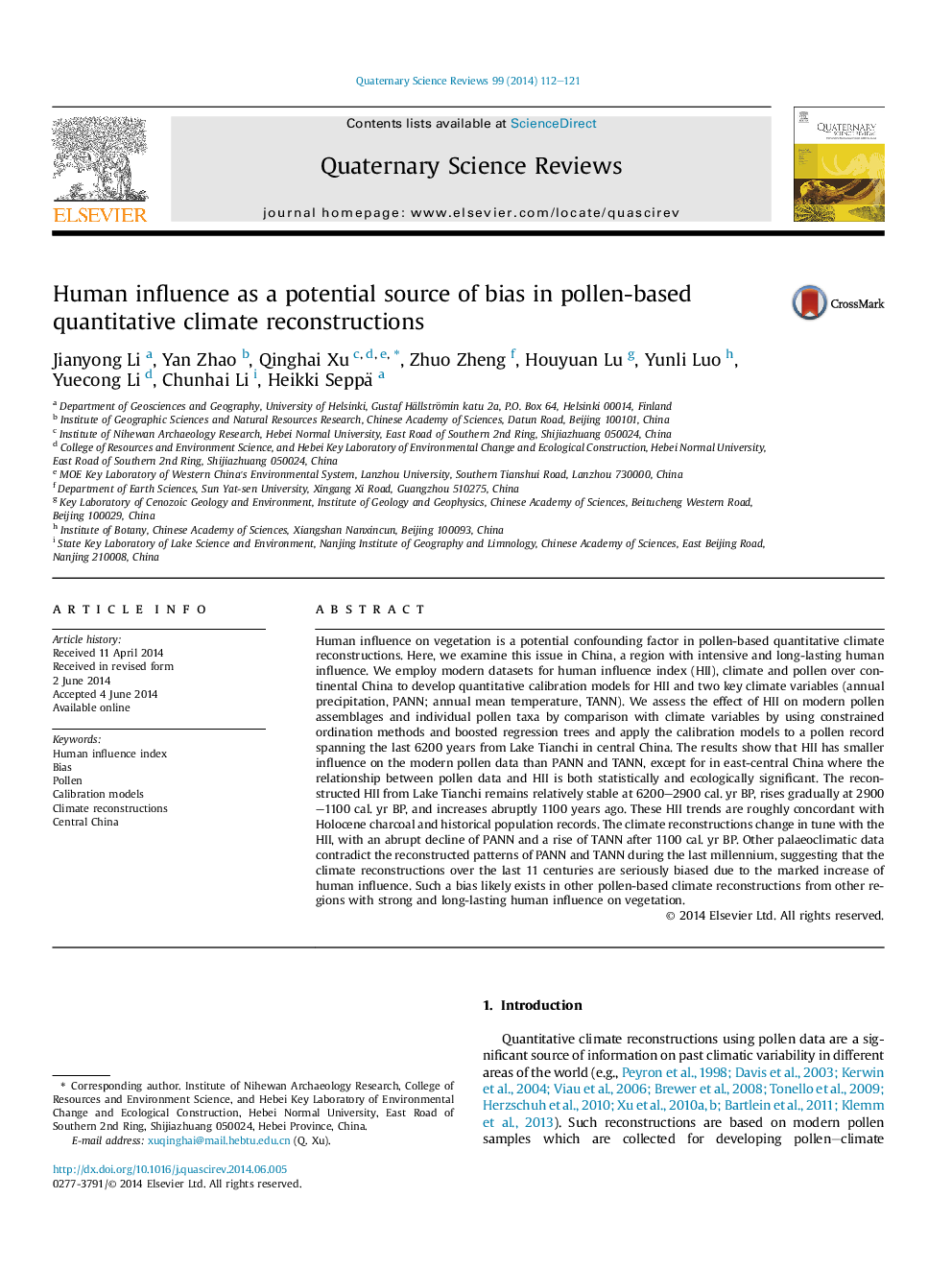| Article ID | Journal | Published Year | Pages | File Type |
|---|---|---|---|---|
| 6445566 | Quaternary Science Reviews | 2014 | 10 Pages |
Abstract
Human influence on vegetation is a potential confounding factor in pollen-based quantitative climate reconstructions. Here, we examine this issue in China, a region with intensive and long-lasting human influence. We employ modern datasets for human influence index (HII), climate and pollen over continental China to develop quantitative calibration models for HII and two key climate variables (annual precipitation, PANN; annual mean temperature, TANN). We assess the effect of HII on modern pollen assemblages and individual pollen taxa by comparison with climate variables by using constrained ordination methods and boosted regression trees and apply the calibration models to a pollen record spanning the last 6200 years from Lake Tianchi in central China. The results show that HII has smaller influence on the modern pollen data than PANN and TANN, except for in east-central China where the relationship between pollen data and HII is both statistically and ecologically significant. The reconstructed HII from Lake Tianchi remains relatively stable at 6200-2900 cal. yr BP, rises gradually at 2900-1100 cal. yr BP, and increases abruptly 1100 years ago. These HII trends are roughly concordant with Holocene charcoal and historical population records. The climate reconstructions change in tune with the HII, with an abrupt decline of PANN and a rise of TANN after 1100 cal. yr BP. Other palaeoclimatic data contradict the reconstructed patterns of PANN and TANN during the last millennium, suggesting that the climate reconstructions over the last 11 centuries are seriously biased due to the marked increase of human influence. Such a bias likely exists in other pollen-based climate reconstructions from other regions with strong and long-lasting human influence on vegetation.
Related Topics
Physical Sciences and Engineering
Earth and Planetary Sciences
Geology
Authors
Jianyong Li, Yan Zhao, Qinghai Xu, Zhuo Zheng, Houyuan Lu, Yunli Luo, Yuecong Li, Chunhai Li, Heikki Seppä,
